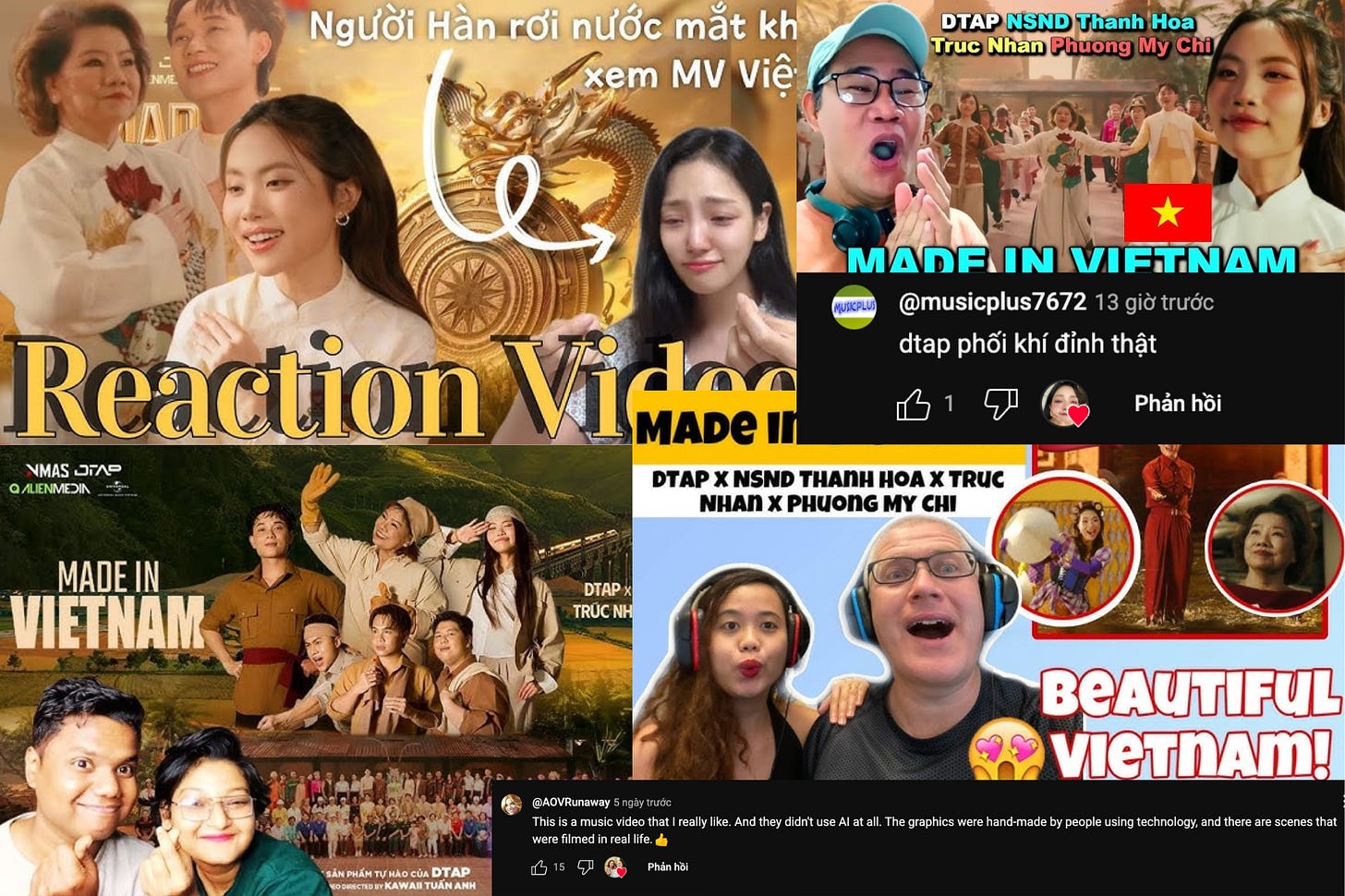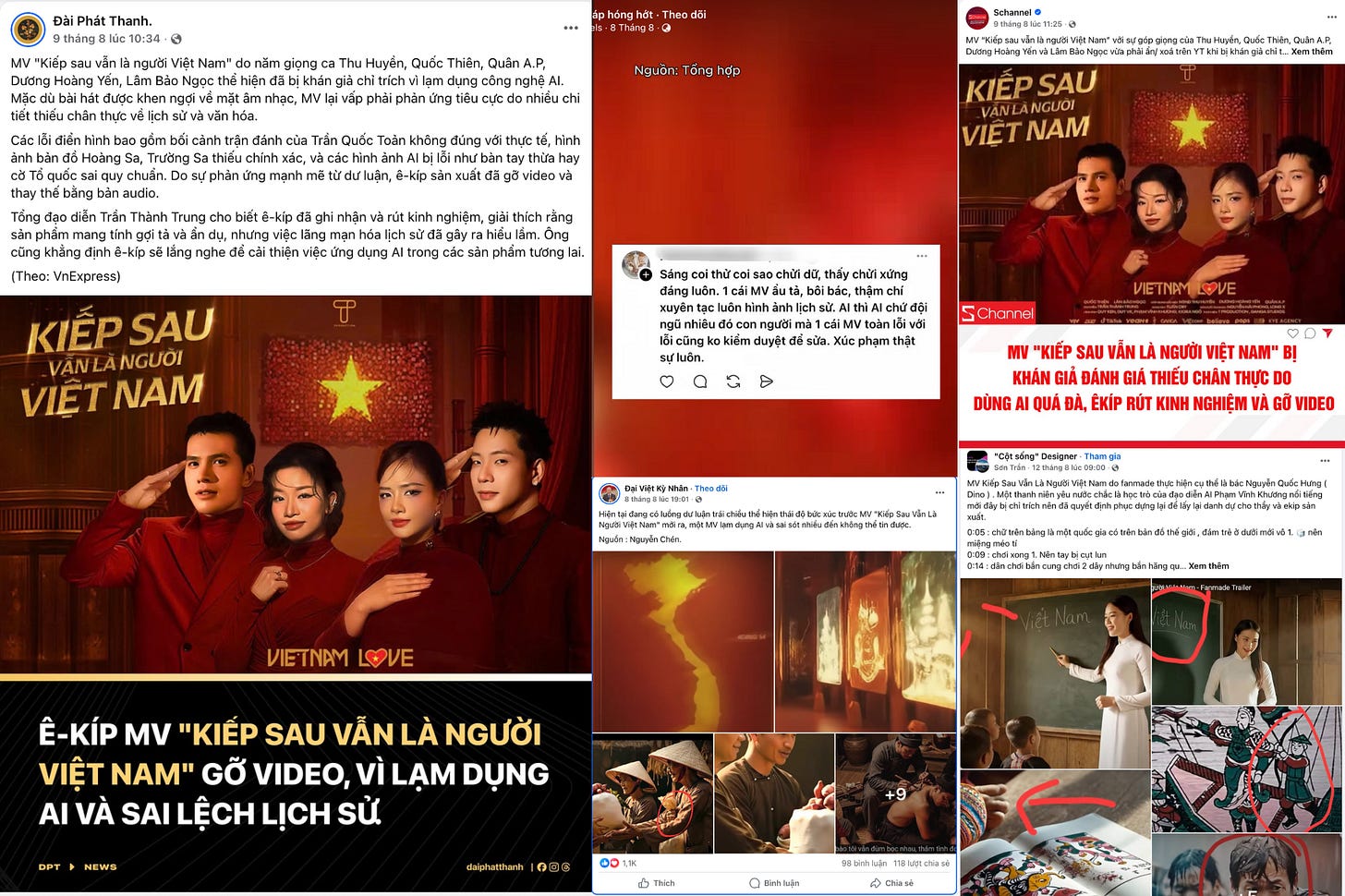Lesson from 2 patriotic MV: Creating arts from culture & history requires wisdom, heart and vision
"Carelessness in any profession is a form of dishonesty" - Nam Cao
The "Era of National Rise" and the Special Year 2025 of Vietnam
We are living in a particularly historic period for our country. Our Party has determined that from the XIV Party Congress onward, our nation will officially enter the "New era of development, the era of national rise of Vietnam." Accordingly, this new era requires fundamental changes in awareness and actions of the entire Party and society in preserving, nurturing, and using most effectively the country's resources. Especially, the new era demands maximizing the spirit, will, and strength of the people - the Subject playing the central role in the cause of creating the new era.
The year 2025 also becomes particularly significant as the country celebrates a series of major anniversaries: the 95th anniversary of the founding of the Communist Party of Vietnam, the 80th anniversary of the August Revolution and National Day September 2, and the 50th anniversary of the liberation of South Vietnam.
In this context, art and music become bridges, bringing messages of national pride closer to the people, while creating resonance to generate strong waves of patriotism throughout Vietnam. Therefore, promoting the creation and development of artistic works from cultural and historical materials is not only a natural trend but also part of the honor and responsibility of artists.
However, two representative music videos recently released - "Made in Vietnam" by DTAP and "Kiếp sau vẫn là người Việt Nam" (Still a Vietnamese in the Next Life) by Tuấn Cry - have shown that while sharing the same noble purpose, different approaches in execution can lead to completely opposite results.
Two Contrasting Reactions from the Public
On social media platforms, these two music videos created an interesting phenomenon regarding two musical products drawing from Vietnamese cultural and historical materials - completely opposite reactions from audiences.
On one side, the MV "Made in Vietnam" received enthusiastic reception with many compliments and strong support from audiences. Most viewers praised the sophisticated combination of traditional cultural elements and modern elements in the MV. Besides the high-quality music that has already established the brand through combining modern EDM with traditional materials by the talented artist group and producers - DTAP, audiences also continuously praised the impressive visual quality in the MV. Considered an MV with meticulous investment from music to visuals, along with the talent of artists like Phương Mỹ Chi, Trúc Nhân, and NSND (People's Artist) Thanh Hoa. All of this created success for the musical product "Made in Vietnam," receiving many compliments from most audiences not only domestically but also worldwide.
On the other hand, the MV "Kiếp sau vẫn là người Việt Nam" caused waves of harsh criticism from audiences. Released just one day after "Made in Vietnam," the musical product "Kiếp sau vẫn là người Việt Nam" was immediately criticized by netizens for numerous errors regarding Vietnamese history and culture right upon upload. This inadvertently created a stark "heaven and earth" comparison with DTAP's MV. The MV "Kiếp sau vẫn là người Việt Nam" became entangled in fierce controversy over the abuse of AI technology in art production. This led to a series of scenes that were historically inaccurate, error-filled, and lacking thoroughness. Finally, under overwhelming public pressure, the team was forced to remove the MV and apologize to the public.
What Caused the Difference?
Although both are extremely meaningful songs aimed at commemorating major national holidays, both sharing the common element of talented young singers collaborating with experienced artists, what caused the two MVs to receive opposite reactions was the script and post-production of the videos. This difference lies not only in production techniques but also reflects the attitude, approach, and level of dedication invested by production teams toward the sacred values of the nation.
Comparing the Two MVs: When Heart and Talent Create the Difference
1. Regarding Image Production Methods
"Made in Vietnam" demonstrates meticulous and professional investment from production to post-production. According to VTV, nearly 400 people contributed to creating this MV with love for the country. All scenes were constructed using high-quality 3D technology, with each frame carefully calculated regarding camera angles, lighting, and color. Notably, visual effects were used to honor beauty rather than replace authenticity - 100 real Vietnamese people appeared in the MV, creating genuine connections between art and life.
Conversely, "Kiếp sau vẫn là người Việt Nam" showed serious lack of control in AI technology application. Although the MV quickly reached #1 on Zing Chart and iTunes rankings immediately after release, excessive AI use without close supervision led to numerous "image garbage." As VTC News reported, AI-generated images lacked accuracy and spirit, placing technique above content, creating "soulless" and inauthentic scenes.
2. Regarding Integration of Historical-Cultural Elements
"Made in Vietnam" demonstrates deep understanding and respect for national cultural heritage. Traditional craft villages like Bát Tràng (pottery village) ceramics and Hà Đông (silk village) silk were recreated accurately to every detail. Particularly, symbols of trống đồng Đông Sơn (Dong Son bronze drums) and chim Lạc (Lac bird) were used with proper cultural meaning, with real traditional instruments recorded directly by professional artisans to preserve the complete "soul" of traditional sounds. The "music train" journey from ga Đông Sơn (Dong Son station) to Hồ Gươm (Hoan Kiem Lake) was not only a creative idea but also carried deep implications about connecting regions across the S-shaped land strip.
In complete contrast, "Kiếp sau vẫn là người Việt Nam" clearly showed lack of preparation and necessary knowledge. Netizens pointed out numerous serious errors: trống Đồng (bronze drum) patterns distorted by AI, losing their sacred nature; the national flag incorrectly rendered - an unforgivable error with a national symbol; inaccurate positions of Hoàng Sa (Paracel) and Trường Sa (Spratly) archipelagos on the map. Particularly serious was depicting hero Trần Quốc Toản "crushing an orange" in a mountainous setting instead of plains as recorded in historical texts, showing disrespect for national history.
3. Regarding Storytelling and Artistic Intent
"Made in Vietnam" was constructed with complete and logical story structure. The music train journey from "ga Đông Sơn" to Hồ Gươm created a clear narrative thread, with each scene having distinct symbolic meaning. Ending with the image of a sacred dragon - a meaningful symbol of national rise, the message was conveyed subtly without being imposing. This success was reflected in positive reactions from international audiences, with reaction videos achieving tens of thousands of views like the W & R channel (22K views), Tim & Vena, and many other reactors expressing admiration for Vietnamese cultural beauty.
Meanwhile, "Kiếp sau vẫn là người Việt Nam" had an interesting "museum of emotions" concept but failed to develop it logically and consistently. Historical images appeared fragmented without tight connections, leaving viewers confused. The "suggestive, metaphorical" style mentioned by director Trần Thành Trung ultimately became an excuse for inaccuracy, unable to justify deviations from history and culture.
Regarding Work Attitude and Responsibility
We don't compare the time and effort investment of the two musical product teams. However, looking at output quality from the audience's reception perspective, we can completely make subjective assessments about dedication, responsible attitude, and meticulousness of the two producers. DTAP and the "Made in Vietnam" team demonstrated high standards of perfectionism <tôi không chắc chắn> and responsibility. The project was nurtured for over a year with thorough preparation, collaborating with real artisans to ensure authenticity. Every detail was carefully researched and considered, showing deep respect for national cultural values. The result was a product with meticulous investment from music to visuals, receiving strong support from both domestic and international audiences.
Conversely, the "Kiếp sau vẫn là người Việt Nam" team initially showed irresponsible attitude by over-relying on AI technology without strict censorship regarding the sacred values of the nation, leading to numerous serious errors. Although they later apologized and decided to remove the MV, this showed lack of preparation and clear direction from the beginning. As one netizen commented: "The producer is also a reputable unit, not a small one, yet they used AI so fakely like this."
Lessons About Creating Art from Cultural-Historical Materials
From contrasting these two MVs, we draw important lessons:
1. Having WISDOM: Deep Understanding as Foundation
Creating art from cultural-historical materials requires deep, accurate understanding of the values one wants to express. One cannot work "by inspiration" with sacred symbols of the nation. Each detail, each image needs thorough research, expert consultation, and strict censorship.
2. Having HEART: Sincere Love Creates the Difference
Sincere love for national culture will manifest through every frame, every sound. When artists truly love what they do, they won't hesitate to invest time and effort to create quality products, rather than seeking "shortcuts" through technology.
3. Having VISION: Responsibility to National Cultural Values
When creating from cultural-historical materials, artists are not just creators of entertainment products but also propagators and educators of cultural values. This demands vision and high responsibility to the community, especially the younger generation. Only when artistic products are produced by the intellect, heart, and genuine talent of artists and production teams can they have "stature," spirit, and deserve to be praised, recognized, loved, and supported by everyone. Art then aims toward true value - enriching culture, rather than chasing trends and achievements that blur its higher noble values.
Technology Serves Art, Not Replaces It
AI and modern technologies can be excellent support tools, but cannot replace human authentic creativity. Most important is having control and direction from those knowledgeable about culture and history.
Finally, the success of "Made in Vietnam" and lessons from "Kiếp sau vẫn là người Việt Nam" have proven that: Creating art from culture and history requires not only talent and technology, but most importantly, wisdom, sincere heart, and visionary responsibility to the nation. Only then can artistic works truly become bridges between past and present, contributing to building national pride for the younger generation.









Check out the English version: 👉 https://open.substack.com/pub/corefidence/p/lesson-from-2-patriotic-mv-creating?r=47h1pn&utm_campaign=post&utm_medium=web&showWelcomeOnShare=true